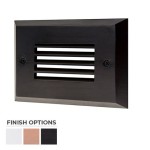How to Design an Outdoor Kitchen
Designing an outdoor kitchen is an endeavor that requires careful planning and consideration of various factors. A well-designed outdoor kitchen can transform a patio or backyard into a functional and inviting space for cooking, dining, and entertaining. Success hinges on balancing aesthetics with practicality, ensuring the space is not only visually appealing but also efficient and durable.
The initial stage involves assessing the available space and defining the intended purpose of the outdoor kitchen. Is it primarily for grilling, or will it encompass a full culinary experience, including food preparation, cooking, and serving? Understanding the scope of the project is foundational to making informed decisions about layout, appliances, and materials.
Budget is also a critical consideration. Outdoor kitchens can range from simple setups with a basic grill to elaborate designs with multiple appliances, custom cabinetry, and integrated entertainment systems. Establishing a realistic budget early on helps to narrow down choices and prevents overspending as the project progresses.
Defining the Space and Intended Use
Before any physical design work begins, a thorough assessment of the designated outdoor space is essential. This involves taking accurate measurements, noting the existing landscape features, and considering the flow of traffic to and from the house. The size and shape of the area will directly impact the layout options and the types of appliances that can be accommodated.
The intended use of the outdoor kitchen plays a significant role in determining its design. A simple grilling station might only require a built-in grill, a small countertop for prep, and some storage for grilling tools. A more comprehensive outdoor kitchen, on the other hand, might incorporate a grill, a side burner, a refrigerator, a sink, and ample countertop space for food preparation. Some homeowners might even choose to include a pizza oven, a smoker, or a beverage dispenser.
Furthermore, the frequency of use should be taken into account. If the outdoor kitchen is only used occasionally, a more basic design might suffice. However, if it is intended for regular use, especially during the warmer months, investing in higher-quality appliances and more durable materials is advisable. Consider weather exposure and plan for protection against the elements, such as sun, rain, and wind.
Local building codes and regulations should also be investigated. Some jurisdictions have specific requirements for outdoor kitchens, particularly regarding gas lines, electrical wiring, and permitting. Consulting with local authorities or a qualified contractor can help ensure that the design complies with all applicable regulations.
Selecting Appliances and Features
Choosing the right appliances is a crucial aspect of designing an outdoor kitchen. The grill is typically the centerpiece, and a variety of options are available, including gas grills, charcoal grills, pellet grills, and smokers. The choice depends on personal preferences, cooking style, and budget. Consider features such as BTU output, grilling area, and the quality of the burners and grates.
Beyond the grill, other appliances can enhance the functionality of the outdoor kitchen. A side burner is useful for preparing sauces or boiling water, while a refrigerator keeps drinks and perishable items cold. A sink with running water simplifies food preparation and cleanup. Storage solutions, such as cabinets and drawers, are essential for keeping grilling tools, utensils, and other supplies organized and within easy reach.
When selecting appliances, it is important to choose models that are specifically designed for outdoor use. These appliances are typically constructed from weather-resistant materials, such as stainless steel, to withstand the elements and prevent corrosion. Consider the energy efficiency of the appliances, especially if the outdoor kitchen will be used frequently.
Additional features can further enhance the outdoor kitchen experience. A built-in ice maker can be a convenient addition for keeping drinks cold, while a warming drawer keeps food warm until it is ready to be served. A sound system and outdoor television can provide entertainment for guests, while outdoor lighting creates a warm and inviting ambiance.
Ventilation is a key aspect often overlooked. Depending on the location and the type of grill used, a range hood or exhaust fan might be necessary to remove smoke and fumes. Proper ventilation ensures a comfortable and safe cooking environment.
Choosing Materials and Layout
The selection of materials for an outdoor kitchen is critical for its durability, aesthetics, and overall cost. Countertops, cabinetry, flooring, and cladding materials must be able to withstand the elements, including sun, rain, wind, and temperature fluctuations. Natural stone, such as granite or marble, is a popular choice for countertops due to its durability and aesthetic appeal. However, concrete, tile, and stainless steel are also viable options.
Cabinetry can be constructed from a variety of materials, including stainless steel, marine-grade polymer, and treated wood. Stainless steel is a durable and weather-resistant option, but it can be more expensive. Marine-grade polymer is a synthetic material that is resistant to moisture and decay, making it a good choice for outdoor environments. Treated wood can be a cost-effective option, but it requires regular maintenance to prevent rot and insect infestation.
Flooring can be made from a variety of materials, including concrete, pavers, tile, and wood decking. Concrete is a durable and low-maintenance option, while pavers offer a more decorative look. Tile is a versatile option that can be used to create a variety of designs, while wood decking provides a warm and natural feel. When selecting flooring, it is important to choose materials that are slip-resistant, especially in areas that are prone to moisture.
The layout of the outdoor kitchen should be designed to optimize workflow and functionality. The work triangle, which connects the grill, sink, and refrigerator, should be arranged to minimize steps and maximize efficiency. Countertop space should be ample enough for food preparation and serving. Storage solutions should be strategically placed to keep essential items within easy reach.
Consider seating arrangements when designing the layout. A built-in bar or countertop seating can provide a casual dining area, while a separate dining table and chairs can accommodate larger groups. Incorporate elements of outdoor living, such as comfortable seating, shade structures, and landscaping, to create a welcoming and inviting outdoor space.
The placement of the outdoor kitchen should also be carefully considered. Ideally, it should be located close to the house for easy access to indoor amenities, such as the kitchen and bathroom. However, it should also be positioned away from windows and doors to prevent smoke and fumes from entering the house. Consider the prevailing winds and position the grill accordingly to minimize smoke exposure.
Landscaping can play a significant role in enhancing the aesthetics of the outdoor kitchen. Incorporating plants, trees, and flowers can create a natural and inviting ambiance. Consider using drought-tolerant plants to minimize water consumption. Shade structures, such as pergolas or awnings, can provide protection from the sun and rain, making the outdoor kitchen more comfortable to use.
Finally, think about lighting. Ambient lighting, task lighting, and accent lighting can be used to create a warm and inviting atmosphere. String lights, recessed lighting, and spotlights can be used to illuminate the cooking area, dining area, and surrounding landscape. Consider using energy-efficient LED lighting to minimize energy consumption.

16 Outdoor Kitchen Design Ideas And Pictures Alfresco Styles

How To Design An Outdoor Kitchen The Ultimate Guide

Design Tips For The Perfect Outdoor Kitchen Front Door Blog By Hayden Homes

Backyard Kitchen Design

Outdoor Kitchen Design Layout Ideas Grillo Beautiful Kitchens

How To Design And Build Your Dream Outdoor Kitchen

Outdoor Kitchen Layout Ideas U Shaped L Plans Landscaping Network

Outdoor Kitchen Layouts Plans For Function Style

8 Outdoor Kitchen Layout Options With Photos

Outdoor Kitchen Layouts Plans For Function Style







